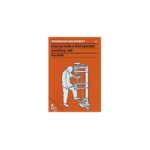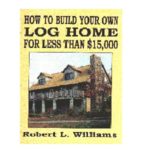EARTH SHELTER HOUSES
$24.95
Description
Rob Roy, (New Society, 2006)
I can’t remember the last time I stopped reading everything else I was in the middle of to concentrate on a nonfiction book. I’m not entirely sure that’s ever happened before. And the funny thing about it is that I am not, by any stretch of the imagination, this book’s target audience; Roy takes a small diversion in Chapter 2 to quote Mike Oehler: "A basement…is an airless place with few windows, artificially lighted and having an artificial feel. An underground house is not this at all." What Oehler is describing is actually exactly what I’m looking for; I never want to see the sun again, if I can help it. Also, the environmentalist stuff goes right over my head; my interest in chasing down this sort of thing is always in the practical money-saving aspects of not having to use temperature control devices (air conditioning an 1100sf house in my area, sparingly, during the summer months can run $300 a month, while heating the same house to sixty-eight degrees constantly during one winter month is well over twice that). Underground housing would seem to be a perfect solution; anyone who’s wandered through a natural cave formation (and didn’t we all take field trips to them in fifth grade?) knows that temperature underground is much slower to change than it is on the surface. Add on a few other niceties and it’s possible to live truly off the grid, and I know many, many people, environmentalists or not, who would be thrilled with such an idea. And there’s a lot of practical advice here that even those who don’t toe the environmentalist line will want to pick this book up and check out, even if they’ve never thought about building an earth-sheltered house (or if they’re idea of underground living is, like mine, radically different than Roy’s), but even that is not the reason I stopped reading everything else to concentrate on this book. That was because it’s fascinating.
Roy has built two major earth-sheltered houses, and he takes us through the building of each. (Not separately; in the chapter on foundations, for example, we get both examples.) One is a more "normal" rectilinear house, while the second is a round house, and Roy talks up the advantages of round-house construction throughout the text (though he does warn that you’ll run into more problems with the bureaucrats, who aren’t used to such things). And, as I said, there’s lots of practical advice, but to me, the book’s real strong point–especially for those who are just picking it up to read–is that Roy is simply a good storyteller. HOW –to manuals are not generally known for their readability, but when it comes right down to it, this is a how-to manual, but it’s one that will have you saying "just one more chapter". As far as I can tell, that makes it an unique book, and one that’s worth your time even if you’ve never thought about building an earth-sheltered house. Now, can someone find me one about building an underground bunker? ****








-150x150.jpg)
Reviews
There are no reviews yet.